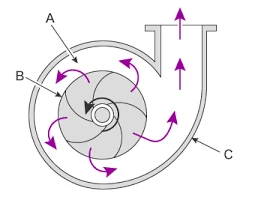Mobile:+86-311-808-126-83
Email:info@ydcastings.com
English
exhaust manifold marine engine
Understanding Exhaust Manifolds in Marine Engines
Marine engines serve as the powerhouse of various vessels, from small yachts to large cargo ships. One crucial component in these engines is the exhaust manifold, which plays a significant role in ensuring efficient engine operation and exhaust emission control. In this article, we will explore the function, design, and maintenance of exhaust manifolds in marine engines.
Function of Exhaust Manifolds
The primary purpose of the exhaust manifold is to collect exhaust gases from the engine cylinders and direct them away from the engine to the exhaust system. In a marine engine, which operates in a unique environment, the exhaust manifold also helps to cool the exhaust gases before they exit the vessel. This is particularly important because marine engines tend to run at higher temperatures due to prolonged operation under load.
Another critical function of the exhaust manifold is to minimize back pressure. Back pressure occurs when exhaust gases are unable to exit the engine efficiently, leading to reduced engine performance and increased emissions. An optimally designed exhaust manifold allows gases to flow freely, which enhances overall engine efficiency and power output.
Design Considerations
Exhaust manifolds in marine engines are typically made of cast iron or stainless steel. Each material has its advantages; while cast iron offers excellent heat retention and resistance to thermal shock, stainless steel provides superior corrosion resistance—an essential property considering the harsh marine environment with its seawater exposure.
The design of the manifold must also account for thermal expansion, as the manifold experiences significant temperature fluctuations during operation. Proper design ensures that there is adequate clearance for expansion without causing stress or deformation, which could lead to leaks or failures.
exhaust manifold marine engine

Furthermore, manufacturers often incorporate water cooling mechanisms into marine exhaust manifolds. This feature helps maintain optimal operating temperatures and reduces the risk of overheating, which can severely damage the engine and other components of the vessel.
Maintenance
Regular maintenance of the exhaust manifold is critical to the longevity and performance of a marine engine. Operators should routinely inspect the manifold for signs of cracks, corrosion, or leaks. A compromised manifold can lead to exhaust gas leaks, which not only reduce engine efficiency but also pose serious safety hazards.
It is also important to check the water cooling passages for blockages, as these can hinder the cooling process and lead to overheating. Regular flushing of the cooling system and using appropriate antifouling solutions can help prevent these issues.
During maintenance, it is advisable to replace gaskets to ensure secure connections between the manifold and other exhaust components. Over time, gaskets can degrade, leading to leaks and increased noise.
Conclusion
The exhaust manifold is a vital component in marine engines, serving essential functions such as directing exhaust gases, minimizing back pressure, and regulating temperatures. Understanding its role and implementing regular maintenance can significantly impact the efficiency and reliability of marine engines. For boat owners and operators, keeping the exhaust manifold in optimal condition is crucial for ensuring smooth sailing and enhancing the overall performance of their vessels.
-
Materials Used in Manufacturing Cap End Pipe FittingsNewsNov.24,2025
-
Material Properties of CF8M CastingNewsNov.24,2025
-
How to Inspect Pump Cap Ends for DamageNewsNov.21,2025
-
Backward Curved Impeller – Efficient Airflow Solutions for Industry | YD CastingsNewsNov.21,2025
-
Automobile Water Pump - Efficient, Quiet, Durable & ElectricNewsNov.21,2025
-
Impeller for Pumps – High-Efficiency, Durable, OEM-ReadyNewsNov.21,2025











